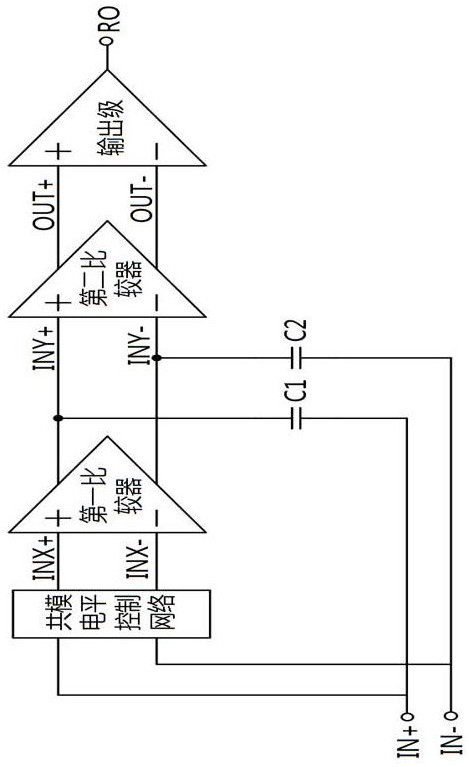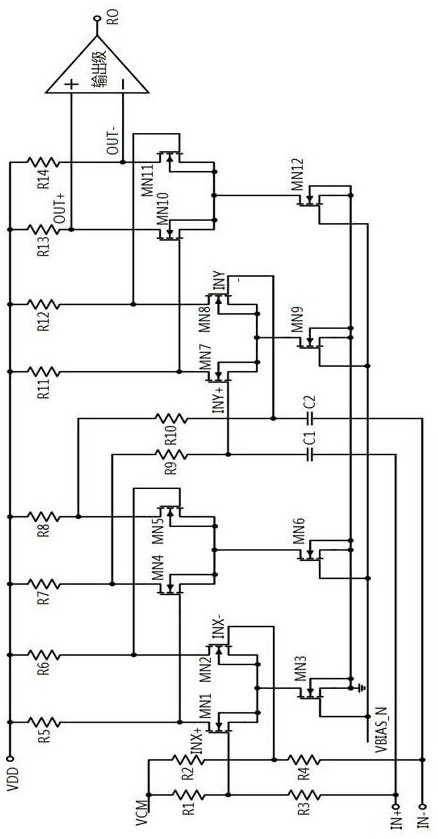Fast comparator circuit with wide common-mode input voltage
A common-mode input voltage and comparator circuit technology, applied in multiple input and output pulse circuits, electrical components, pulse processing, etc., can solve problems such as limiting the maximum transmission rate of signals, reducing edge rates, and affecting signal transmission quality. Achieve the effect of improving signal quality and increasing speed
- Summary
- Abstract
- Description
- Claims
- Application Information
AI Technical Summary
Problems solved by technology
Method used
Image
Examples
Embodiment
[0040] In order to solve the low-pass filter formed by the input capacitance of the large-size comparator in the prior art, the edge rate will be reduced, thereby limiting the maximum transmission rate of the signal, and the additional capacitive load brought by the input capacitance will cause the receiver input extra jitter at the end, which affects the technical problem of signal transmission quality. This embodiment provides a fast comparator circuit with wide common-mode input voltage. The circuit obtains a small offset by cascading two sets of comparators. voltage VOS and very high rates of dynamic signal transmission. Compared with the traditional comparator with a wide common-mode input voltage range, the comparator circuit in the present invention makes the offset voltage VOS and the signal transmission rate no longer restrict each other. On the premise of ensuring a more accurate offset voltage VOS, the signal transmission rate is increased and the signal quality is ...
PUM
 Login to View More
Login to View More Abstract
Description
Claims
Application Information
 Login to View More
Login to View More - R&D
- Intellectual Property
- Life Sciences
- Materials
- Tech Scout
- Unparalleled Data Quality
- Higher Quality Content
- 60% Fewer Hallucinations
Browse by: Latest US Patents, China's latest patents, Technical Efficacy Thesaurus, Application Domain, Technology Topic, Popular Technical Reports.
© 2025 PatSnap. All rights reserved.Legal|Privacy policy|Modern Slavery Act Transparency Statement|Sitemap|About US| Contact US: help@patsnap.com



